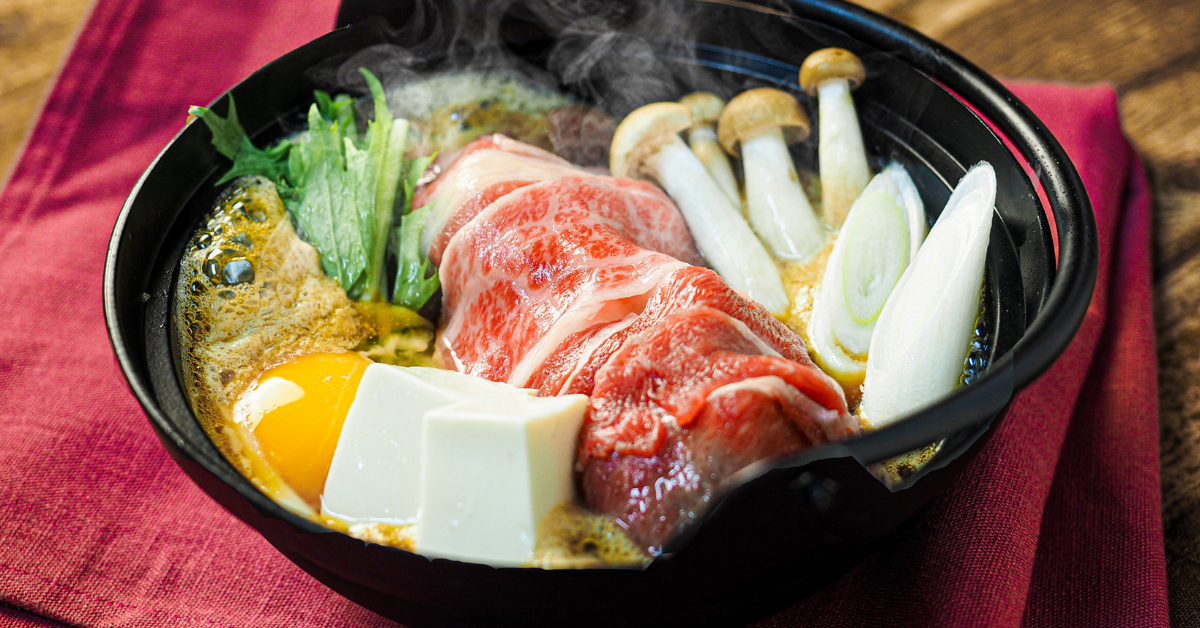Sukiyaki is one of Japan’s most iconic hot pot dishes, loved at family gatherings, celebrations, and cozy winter meals. Thinly sliced beef and vegetables are simmered in a sweet soy-based broth, then dipped in raw egg for a rich and unique flavor. In this article, we’ll explore why sukiyaki is so popular in Japan and introduce its essential ingredients.
Why Is Sukiyaki Popular in Japan?
Sukiyaki has been enjoyed since the Edo period, but it became especially popular in the Meiji era when beef consumption spread throughout Japan. Today, it remains a symbol of special occasions and family gatherings.
| Reason for Popularity | Details |
|---|---|
| Sense of luxury | Often uses high-quality wagyu beef, making it a feast for special days |
| Sweet-savory flavor | The soy sauce, sugar, and mirin broth suits the Japanese palate |
| Shared dining style | A hot pot meal encourages communication and bonding at the table |
| Seasonal appeal | Perfect for warming up during the colder months |
Sukiyaki is not only delicious but also a dish that brings people together.
Essential Ingredients of Sukiyaki
While recipes vary by household and region, the basic ingredients remain the same.
| Ingredient | Role & Features |
|---|---|
| Beef | The star of the dish, often thinly sliced wagyu for tenderness and flavor |
| Chinese cabbage | Absorbs the broth and balances the richness with a light texture |
| Green onions | Become sweeter when cooked, pairing perfectly with beef |
| Shirataki noodles | Low in calories, add a unique texture and absorb the broth |
| Grilled tofu | Holds its shape while soaking up flavor |
| Mushrooms | Shiitake or enoki add aroma and umami |
| Egg | Beaten raw egg creates a mild, creamy coating when dipping cooked ingredients |
These ingredients are simmered in the broth, then enjoyed by dipping into raw egg for a signature sukiyaki experience.
Kansai Style vs Kanto Style
Sukiyaki differs significantly between regions, with Kansai (Osaka) and Kanto (Tokyo) having distinct cooking methods.
| Region | Characteristics |
|---|---|
| Kanto | Ingredients are simmered directly in a prepared broth of soy sauce, sugar, mirin, and sake |
| Kansai | Beef is first seared in beef fat, then seasoned with sugar and soy sauce before adding vegetables |
Both styles offer unique flavors, making sukiyaki a dish worth experiencing in different parts of Japan.
Modern Enjoyment and Variations
Sukiyaki has also evolved into modern variations that suit diverse tastes.
- Alternative meats: Using pork or chicken for a lighter option
- Western twist: Adding cheese or tomatoes for fusion-style sukiyaki
- Healthy style: Increasing vegetables and reducing sugar for a lighter version
This adaptability keeps sukiyaki popular across generations and lifestyles.
Conclusion
Sukiyaki is more than just a meal—it’s a part of Japanese culture. From luxurious wagyu beef to simple home-cooked versions, it remains a dish deeply loved by Japanese families. The combination of sweet-savory broth, tender beef, fresh vegetables, and creamy egg creates a truly unique flavor experience. Whether Kansai-style or Kanto-style, sukiyaki continues to be a warm symbol of togetherness in Japan.






